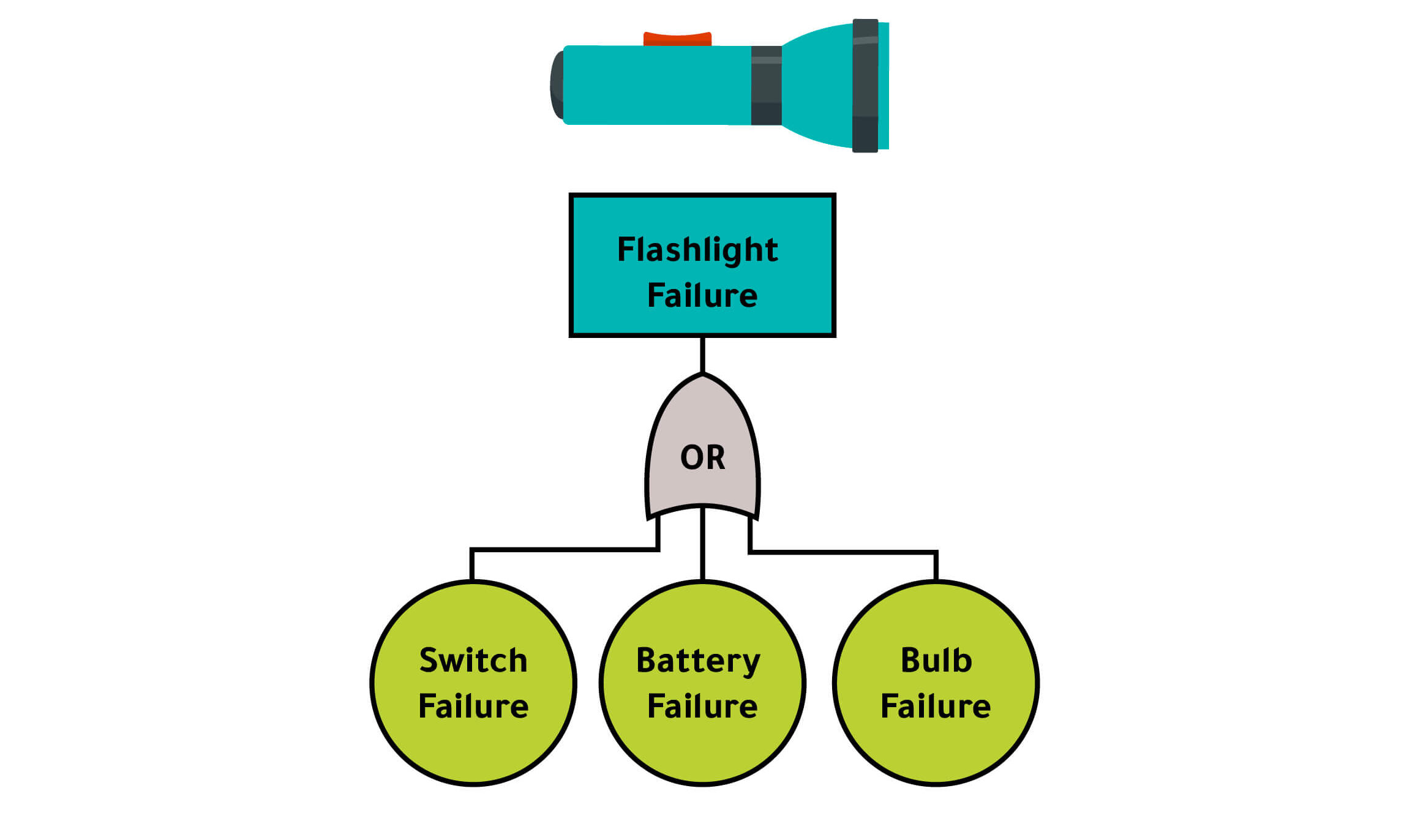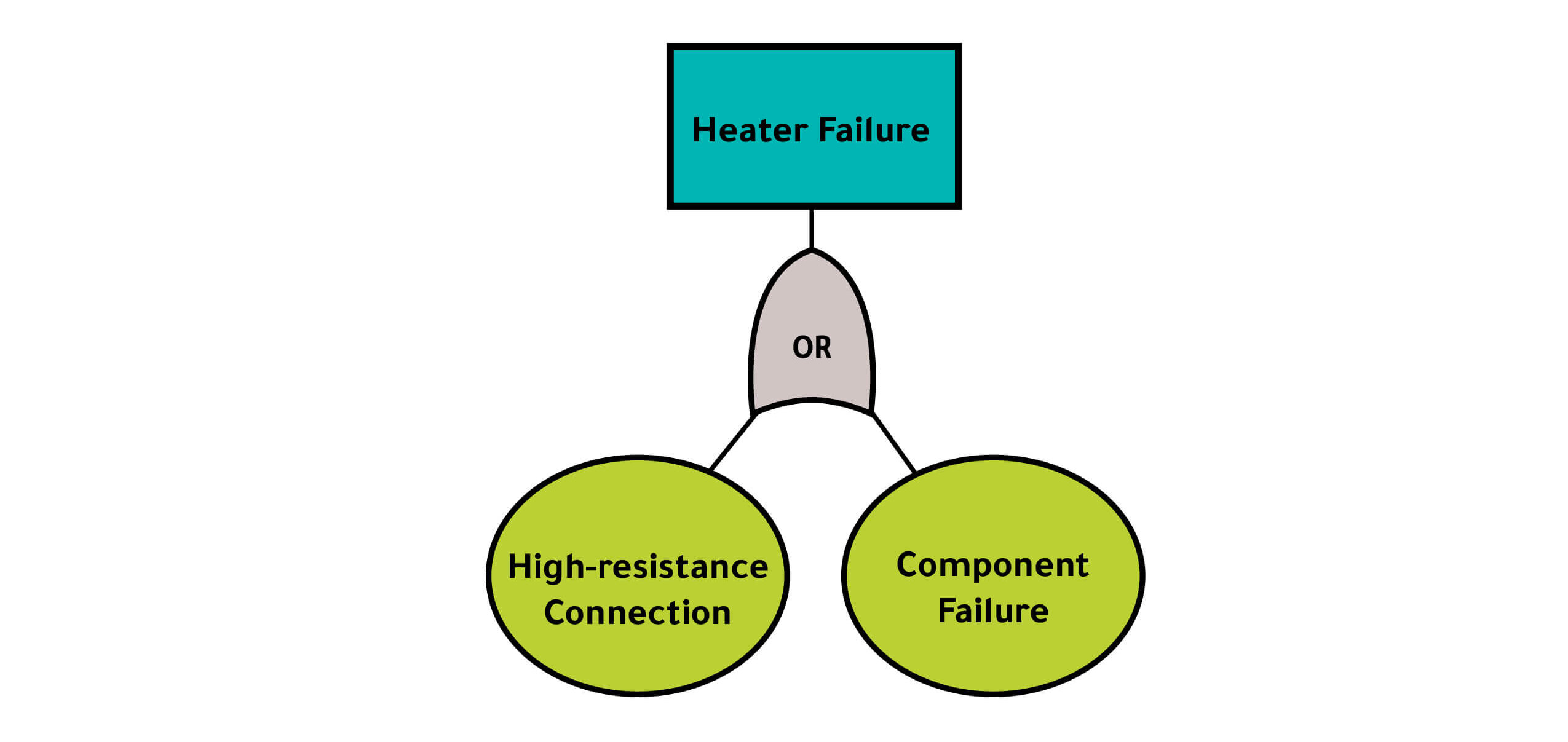By Richard-Alexandre Tremblay, P.Eng.
During a forensic investigation, our experts gather as much data as possible to establish the circumstances, the origin and the cause of a loss. To pinpoint the exact cause and evaluate potential subrogation opportunities, our engineers adhere to a rigorous process. At the heart of our investigative process lies what we fondly refer to as the “fault tree analysis”.
Fault tree analysis involves gathering as much data as possible during the investigation so that all possible sources of failure are identified. Fault trees are often show graphically.
For example, here is a representation of the fault tree of a flashlight. If the flashlight stops working properly, there are three possible failure sources to verify: the switch, the battery or the light bulb.

Figure 1
Flashlight fault tree
“OR” and “AND”
In our investigative toolkit, we wield two powerful tools: the “OR” and “AND” logic gates. Picture the “OR” gate as a key that unlocks the possibility of multiple culprits acting alone. If any one of the suspects—be it the bulb, the switch, or the battery—is guilty, the flashlight ceases to function.
Contrastingly, the “AND” gate requires a convergence of factors for failure to occur. Think of it as a combination lock, demanding the precise alignment of all elements. To help us understand the logical “AND” function, let’s think of a fire (Figure 2). In the simplified model, four elements must come together to produce a fire: heat, an oxidizing agent, fuel, and a chain reaction. Without of one these elements, combustion cannot be sustained.

Figure 2
Fire fault tree
Using this logic, let’s imagine a fictional situation involving the ignition of a fire due to the electrical failure of a fan. We must have, simultaneously and in the ambient air (oxygen), the initiation of an electric arc on a fan component (heat source), the presence of nearby combustible materials (fuel), and an oxidation reaction that must be maintained (chain reaction) to allow the fire to spread. The absence of any of one of these essential elements will prevent a fire.

Figure 3
Logical function “AND”
In the case of a garage fire, for example, an engineer might consider multiple possible sources of ignition including: smoking materials, hot work (welding or other activities that generate sparks or heat) “OR” an electrical failure in a ceiling unit heater.
Considering that the occupant did not smoke or conduct hot work these causes are dismissed as unlikely. After analysis of the propagation patterns and short-circuit traces suggest a failure of the unit heater, it may be determined that this ignition source is most likely.
Once the cause is narrowed down, an engineer can further investigate to determine the failure mode. Is it a high-resistance contact attributable to faulty installation “OR” is it rather an internal failure of the unit heater resulting from a manufacturing defect?
Depending on the cause identified, subrogation possibilities can be explored.

Figure 4
Logical function “OR”
The Importance of a Root Cause
In the event of an internal failure of the unit, the fault tree method can be used by the unit heater manufacturer’s engineer. Why? Because the initial failure mode, commonly known as root cause is closely linked to the possibility of subrogation.
Identifying the initial mode of failure helps to improve the quality of a manufacturer’s products, and to correct problems in the next version. Depending on the severity of the problem, the manufacturer may issue a recall on certain products to minimize the risk to users.
Failure analysis can be broken down in four components: reliability, maintainability, availability, and safety (RAMS). RAMS assesses the capability of a system or product to operate effectively within specified environments and conditions, determining its suitability for its intended purpose.
The fault tree is applicable to all branches of forensic engineering. It is an integral part of the work carried out by our experts when you entrust CEP Forensic with the management of your claims and subrogation files.
